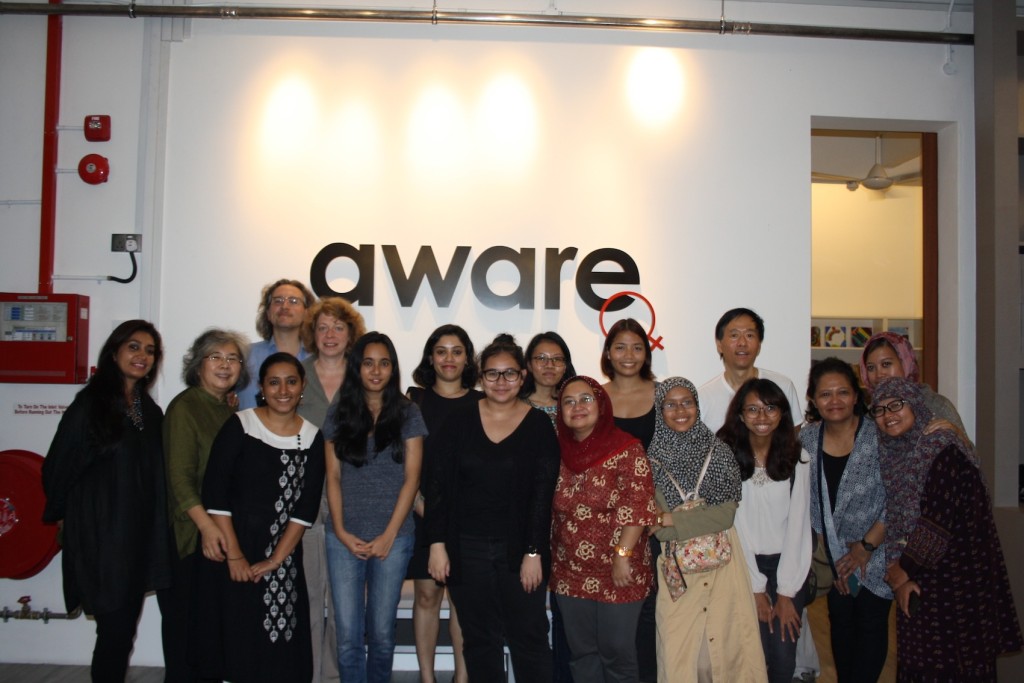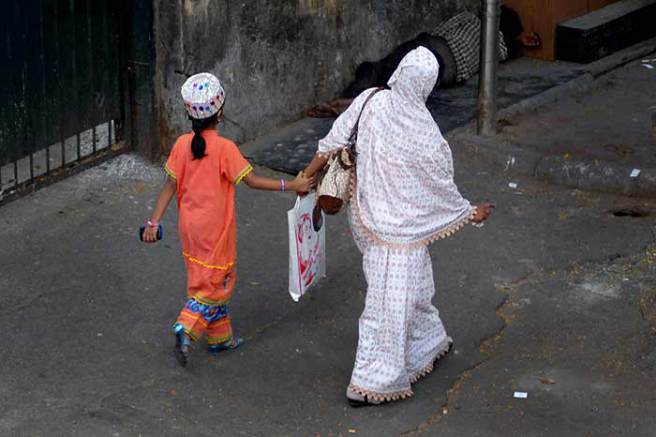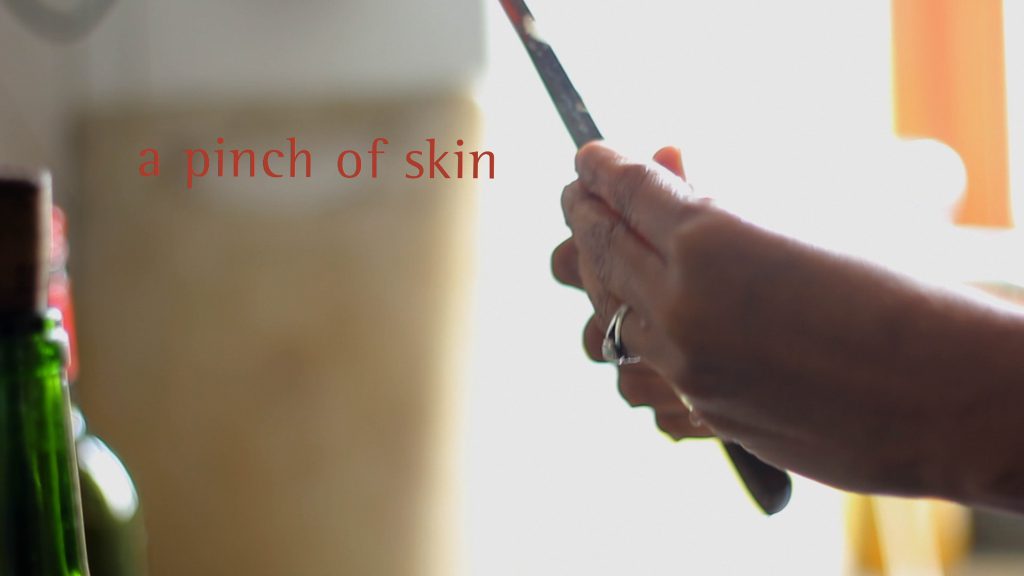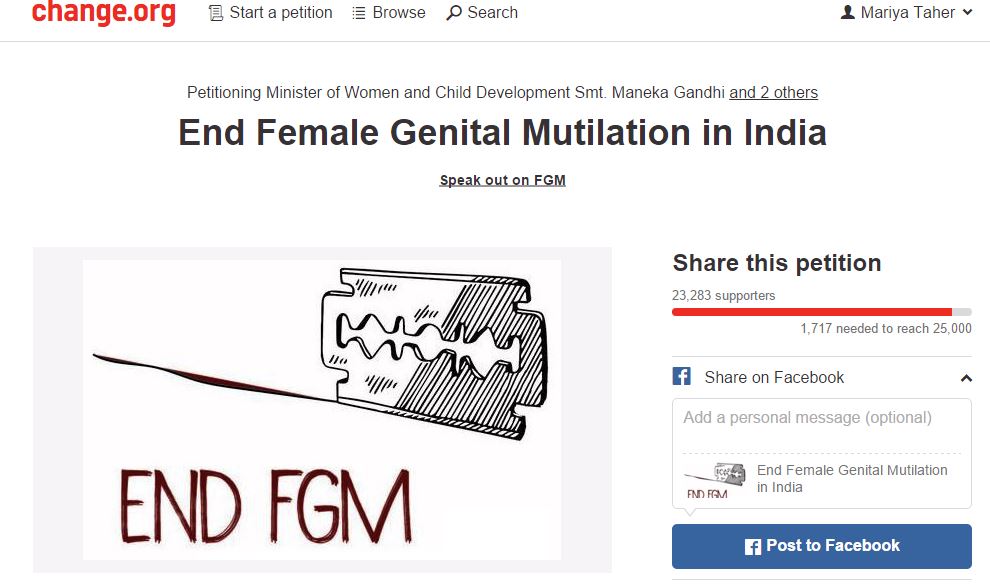‘If Allah has sent us whole, why should we cut for the sake of God?’

(Trigger Warning: The story below is a powerful account of one woman’s memory of FGC. We are grateful to her for sharing with us the details of her experience.) By Saleha Paatwala Country: Noida, India Age: 23 I was 7 years of age when one day my grandma took me to an unfamiliar place. I was informed that it would be a huge gathering and children like me would come as well. We came to the second floor where we were advised to sit by a woman as old as my grandma. It didn’t appear to be exceptionally happening, and out of sheer interest I asked her why we were there – to which she just grinned and said that everybody was en route. What happened next will continue to haunt me until the end of time. After an hour, one more woman came in and asked us to follow her. It was a miserable room on the terrace, small and messy. My grandma and I sat on the little bed. The woman took out some cotton, blade and some harsh fabric and I just couldn’t comprehend what was occurring. She asked me to lie down, but I was very young and could never have imagined anything terrible could happen. I just couldn’t understand what was happening. I believed my grandma and sat down when she insisted. The other woman now began removing my underwear. This sickened the hellfire out of me. I began fighting back, at which every one of the women, including my grandma, held my hands and feet tight so that I could not move. I was yelling as loud as possible, but no one was listening. After she had successfully taken off my underwear, the second woman spread my legs, grabbed the blade and cut something between my legs. The pain was anguishing and intolerable and it gave me an injury. She then put some cotton on that part and put my clothing back on. My grandma and two other women began giggling and saying, “Mubarak ho, iska khatna ho gaya hai.” (Congratulations, she has been circumcised). At that age, who has ever considered going through such an agony in the most intimate area that no youngster would even like anybody to see or touch? I didn’t really see the amount of blood that had gushed out because I had no courage to. Only after I reached home and went to pee, I saw the cotton and figured it out. I couldn’t urinate properly for three days as it tormented me that much. All these years, I never had the boldness to open up and discuss this. My grandma told me that ladies get to be devout after completing khatna, and I accepted that. Then one day, we were shown a film on Female Genital Mutilation (FGM) at my college. It gave me goosebumps and took me all the way back to my childhood when I had been through this assault. In that film, my own community members were spreading awareness and battling this practice. It made me realise, unmistakably, that what happened wasn’t beneficial for me, wasn’t useful for anyone. That little film gave me so much courage that I can now share my dim story with everybody, even though it is still a taboo. There is no religious aspect to this ritual. It is only a practice, a hazardous and destructive custom which is being perpetuated by individuals. It wasn’t just a little piece. It was a piece of me, my private area that no one has a right to touch without my consent. If Allah has sent us whole, why should we cut for the sake of god, to make a lady pious?
Wadi and Aware organize first ever conference on Female Genital Mutilation/ Cutting in Singapore

(Originally published on Stop FGM Middle East on January 9, 2016. Republished here with permission). By Hannah Wettig Women from Malaysia, Thailand, India and Singapore joined on Thursday in Singapore to present their perspectives on FGM/C in their countries and discuss ways to eliminate the practice. It is the first time that such a meeting took place in Singapore and even in South East Asia as a whole, assumes Vivienne Wee, a founding member of the Singaporean women’s organization Aware. The Singaporean feminist organization organized the conference together with WADI as part of WADI’s Stop FGM in the Middle East & Asia campaign. Female Genital Mutilation/Cutting (FGM/C) has not been a topic for us, says Vivienne Wee, a founding member of the Singaporean women’s organization Aware. It is known that it is prevalent among the Malay community and other Muslim communities in Singapore. But to what extend and how severely girls are cut is not known. There are no studies, yet. Similarly, no studies exist for Thailand, India or other countries in the region like Sri Lanka where FGM is known to be practiced. John Chua, professor for film and associate of WADI also mentioned in his presentation communities in Cambodia and Dagestan who practice FGM. “There is so much, we don’t know yet about FGM in Asia”, Chua said. Professor Maznah Dahlui shows participant what exactly is removed in which case To overcome this lack of information the meeting included a training on how to conduct surveys on FGM. Stop FGM Middle East campaigner Hannah Wettig presented the newSurvey Tool Kit developed by Wadi with the support of the Wallace Global Fund. A first survey has been started in Singapore. Activists suspect that little is cut if at all. Common in the region are practiced like nicking, pricking and scratching of the skin above the clitoris as Professor Maznah Dahlui reports in her presentation. She is one of the most renown experts on FGM/C in Malaysia. In a survey she conducted only 22,2% of mothers who had their daughter “circumcised” reported that the tip of the clitoris had been cut, 33,3% reported the skin had been scratched, others called it a pricking or nicking. While in Malaysia still most girls are brought to a traditional midwife (69%), in Singapore it can be assumed that all “circumcisions” are undertaken by professional medical personelle because traditional midwifery is illegal. Speakers from Thailand say FGM/C is not their concern The Singaporean feminists from Aware are particularly concerned with the compromising of medical professions. Singapore is a secular state, yet an operation is carried out for religious and non-medical reasons. In all of South-East Asia the practice is viewed as a religious need. In Indonesia and Malaysia the Muslim bodies have called it compulsory. Such a statement was also released by the Muslim Council in Singapore but is taken down from their website now, Filzah Sumartono from Aware explains. The issue is still strongly tabooed. Such a practice does not seem to fit to Singapore’s modern image. However, the government does not interfere in the business of the religious communities, explains Filzah. Also feminists are afraid that discussing it might alert the fundamentalists. In Southern Thailand, the question is not a concern of women’s organizations, says Huda Longdaewa. There are more pressing issues like the repression of Muslims and the violent conflict in the district of Patani whose people are demanding independence and stricter Sharia rules. The two participants of Thailand believe the type of FGM/C practiced in their country is not causing any problems. However, the filmmaker John Chua who has just visited Patani, reports how he spoke with a midwife who admitted to still practice female circumcision even though her license has been revoked because she is nearly blind. Insia, Areefa, and Priya from the Indian Group Sahiyo The Indian group Sahiyo (meaning “friends”) find much stronger words against FGM. “It is like a sexual assault”, says Areefa Johari who has spoken out publicly as a victim of FGM/C. There is also the fear of being expelled from the community. The Dawoodi Bohra, a small well-to-do community, are not traditional or fundamentalist Muslims. On the contrary, they are in many aspects modern and cosmopolitan. Female circumcision seems to be a marker: “If you are not cut, you are not Bohra”, explains Insia Dariwala, who was saved from being cut because of a catholic mother but feels that she is not accepted in the community.
The Practice of Khatna or Female Genital Mutilation amongst the Dawoodi (Daudi) Bohra Shia Muslim Community – Part 1

(originally published on Ms. Dilshad Tavawala’s wordpress.com blog on January 17, 2016. Reposted here with permission) By Ms. Dilshad Tavawalla, B.A., LL.M., Barrister, Solicitor, Notary Public – Toronto, Canada Female Genital Mutilation/Cutting (FGM/C) has been an international cause célèbre, and generated remarkable global attention for the past several decades. At international and intergovernmental levels, there is unequivocal consensus that FGM/C represents an extreme violation of the human rights of women and children, a danger to sexual and reproductive health, a harmful practice and a form of gender-based violence, and that it must be abolished. Nations around the world have intensified and expanded their commitment levels to FGM/C; more and more data has been collected, analysed and used; and the UN, its agencies and NGOs around the world have refined and scaled up their efforts on the ground to ban, and eradicate it. In fact, the UNFPA-UNICEF Joint Programme on Female Genital Mutilation/Cutting: Accelerating Change is the largest global initiative to promote abandonment of the practice of FGM/C. However, despite all this worldwide effort to end FGM/C, India in particular, has escaped much of the focus and global attention due to the fact ‘khatna‘ or FGM/C is pervasive and secretly practised amongst the members of the Dawoodi Bohra Shia Muslim community (emphasis mine). The cultural practice of khatna is non-existent, and virtually unknown in various Muslim sects, sub-sects and communities, as well as, other religious denominations found in India, namely, the Hindus, Christians, Parsis, Jains, Buddhists, Sikhs, etc. The Dawoodi Bohra Shia Muslim community, found in large numbers in India and Pakistan, and to a smaller extent, in Bangladesh and Sri Lanka are the only Muslim community in the Indian sub-continent that practises FGM/C. In November 2015, this secretive and clandestine practice known as khatna amongst the uniquely close-knit Dawoodi Bohra Shia Muslim community, attracted worldwide media attention. Three members of the Dawoodi Bohra(DB) community were convicted in Australia’s first ground-breaking prosecution of a FGM/C case where a retired nurse, a mother of the minor girls and a Dawoodi Bohra clergy member illegally participated in carrying out khatna on two minor girls. News of these convictions was reported worldwide in the media including newspapers such as UK’s The Guardian, The Times of India, Hindustan Times, and television news channels in India, Australian and UK. This landmark Australian prosecution of members of the Dawoodi Bohras for illegally practising khatna has prompted several DB women in India to collectively speak out against this dangerous and harmful ritual. Unfortunately, open discussion on FGM/C remains a taboo, even in developed countries due to cultural and religious relativism which has created a reluctance to openly confront and tackle ending FGM/C. I do not wish this post to be seen as a criticism of the Dawoodi Bohra Shia Muslim community to which I belong, but rather a voice seeking to achieve the most fundamental values that underlie all religions, traditions and cultures – “do no harm to others”, which approach, I believe, will promote the wider issues of ending violence against girl children and women, and tackling gender equality in patriarchal societies. The aim of this post is to also offer some cultural insight and understanding of the Dawoodi Bohra Shia Muslim community, to throw light, raise public awareness and capture the underground cultural practice of khatna through the words and lens of Dawoodi Bohra women living around the world. I was born in, and belong to the Dawoodi Bohra Shia Muslim community. I know khatna personally and intimately because it was performed on me at the age of 7 years. The horror, trauma, grief and sadness remain with me till today. Photo credit: Outlook Magazine, Dec 12, 2011
Documentary ‘A Pinch of Skin’ highlights FGC in India

A Pinch of Skin, a short documentary made in 2012, depicts the practice of Female Genital Cutting, also known as khatna or sunnat by the Dawoodi Bohras in India. Screened worldwide, the film received the prestigious National Award of India for being the first documentary to highlight the taboo practice of khatna. The film brings together personal narratives on the experience of undergoing the blade, juxtaposing both the people who support the practice as well as a small but significant voice of questioning dissent. Watch the film’s trailer here and follow the Facebook page for updates on the film and stories on FGC from around the globe.
SIGN ANTI-FGC PETITION TODAY!

In 2011, an anonymous Bohra woman using the name ‘Tasleem’ made the first attempt to end the practice of female khatna through an online petition on Change.org. That petition was addressed to Syedna Mohammed Burhanuddin and received less than 4,000 signatures. The Bohra community has come a long way since then. On December 1, 2015, Masooma Ranalvi and 16 other Bohra women from around the world launched another petition – this time addressed to various ministers in the Government of India – demanding a law against Female Genital Mutilation as practiced by Bohras in India. This was the first time that such a large number of women from the community decided to discard their anonymity and publicly speak out against a practice that has affected them. The petition managed to get more than 2,000 signatures in the first two days itself, and has garnered more than 23,000 supporters so far. More notably, it has received plenty of attention and support from various media organisations, including Mumbai Mirror, DNA, Huffington Post, Scroll.in, and BBC. To sign the petition now, click here.
The Good Mother

A still from the film ‘ A Pinch of Skin’ which depicts the practice of Female Genital Cutting or ‘Khatna’ in India. (The piece below is the film-maker’s exploration on filming/’framing’ the ‘Good Mother’ for a practice which she (the film-maker) felt was a violation but her protagonist thought it to be in the best interests of her daughter.) They said ‘to be a good mother you must take your daughter through the ritual’. They said it with conviction and sincere eyes; but I found myself flinching. Flinching, because the belief that had carried me to different cities and this stranger’s drawing room was at loggerheads with her ideas. Yet, as I ate her biscuits and drank her tea, I saw myself noticing those believing eyes with which she was opening up to a complete stranger, me. As I sat opposite ‘the good mother’, the ‘genuine person’, I was shrinking – ‘I believe what you do is “wrong”. It is just not right.’ And as I thought of ways to tell her so, her faith shook me. Not only the faith with which she did ‘it’, but also the faith with which she let me in on it. Between us then, there were no secrets. She told me with candor that she got her daughter ‘cut’ in the name of a tradition called Khatna (a practice she believes her prophet endorses). It had to be done to every ‘good girl’. Good girl is strange phrase I have found. Growing up, so many people in their solicited/unsolicited ways had made sure I knew the phrase well, especially my mother. Going to a Christian school I knew I had to keep my hair tied and skirts long. Those pretty standard things girls are schooled in. But the conflict was, I knew myself to be a good person but I didn’t want to be a good girl. And every now and then my mother and I would fight for that contested parable-like existence – the good girl. She, the sweet stranger, further went on to qualify the parable itself. ‘you know the good girl, who never falls in love (before marriage) and never strays out (after marriage).’ Pretty standard, I thought. The same, in fact, as my mother would have once said. ‘Boys are dangerous. Sexuality is a no-go land’. Why, then, did I sit opposite this stranger, holding my camera, leading my gaze in her thoughts? ‘Aap jo bologe mein waisa hi film mein dikhaungi. Kuch change nahin karungi.’ (Whatever you tell me, I will depict that in my film as it is. I will not tamper with your version.) I found myself saying this to everyone, everywhere. Why? Because even then I could tell that I would be cheating them if I don’t put their standpoint further. Truth is not absolute nor can people be. What these women held close to their heart was not just a tradition; but a belief they upheld with the best interests of their daughters in mind. And this is where everything gets difficult to negotiate. ‘One-million strong community of Dawoodi Bohras are known to practice Type 1 of female genital cutting known as Khatna or Sunnat. A practice, they believe which serves as a rite of passage for girls born into this community. This is usually done to girls mostly at the age of seven; seven believed to be the right year, for the girl would neither forget it nor be harmed much’. I remember my thirteenth year to be a particularly troublesome one. Everyday without fail my mother and I would lock horns with each other on something or the other. One such topic of contention – being ‘unclean’ during my periods. I wasn’t allowed to ‘touch’ god or enter god’s room. She was so stern in her beliefs as if god was checking who was bleeding who was not. Sitting in this sweet lady’s drawing room I could hardly skip over the similarities in a few notions. Who rolls these practices, these thoughts, which invariably contain women and anything remotely related to their sexual being? Who is checking? Who deems such notions of the good girl ? And yet, why is it that women are subjected to sexual violence of all kinds imagined? One lady from the documentary added, ‘Women’s sexuality needs to be moderated as they are the cause of all evil. Even the rapes.’ I was shocked, stunned, enraged. But how is this any different from the absurd idea of me being unclean during my periods? These are beliefs that mothers maintain to see their daughter through on the “good” path of modesty, a path of least resistance; without questioning, without challenging, without giving it any kind of fight, if at all. II The lady in that drawing room became the highlight of my film. I have over the years seen and heard audience gasp, mutter, whisper among themselves as they hear what she believed (in earnest, if I may add). Every time I saw those unknown faces in the dim light of the auditorium, I shrunk. If only I could add, You are seeing her hands and feet. Believe me you would feel differently if you saw her eyes. A still from the film. The documentary mostly features silhouettes, hands and feet along with abstract visuals to gaurd the identity of the subjects in the film. — (Dear lady, if you ever read this – I apologize. I apologize that people see you in a monochrome, as if you are the only one indoctrinated. But I have no doubt that you are a good mother. And I will remember you all my life.) By Priya Goswami Read more about A Pinch of Skin here: https://www.facebook.com/APinchofSkin/
